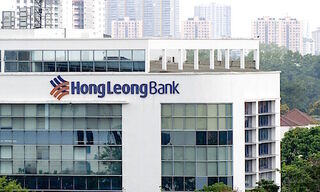Three countries provide the best conditions for the development of fintech lending in Southeast Asia. In a short term perspective, it promises to result in the inflow of investments in the local projects.
Indonesia, Philippines, and Thailand provide the most favorable conditions for the development of fintech lending in Southeast Asia (SEA), according to a survey compiled by Robocash, a financial group operating in the segments of consumer alternative lending and marketplace funding in Europe and Asia.
Indonesia provides the most fertile environment for the development of alternative lending in Southeast Asia. The country got 147.5 points in the index. To distinguish the prospects for fintech lending in the eleven SEA countries at a numerical scale, the company studied sixteen different aspects associated with social and economic development, financial inclusion, digital adoption, etc.
Growing Need For Finance
The most significant factors placing Indonesia to the top are the population size, widespread use of mobile phones, growing need for finance with remaining low access to financial services.
Thus, in 2017, only 48.9 percent of the Indonesian had a bank account, but 54.8 percent borrowed money. According to Financial Services Authority (OJK), as of December 2018, the volume of P2P loans issued in the country amounted to over $1.15 billion.
Taking second place in the index (64.9), the Philippines has several strong points too. Compared to Indonesia, there are more young people, who will be active consumers soon.
Territorial Fragmentation
Also, Filipinos are the first in the world by the time spent online and on social media. However, the territorial fragmentation still leaves people underserved by banks: only 34.5 percent had a bank account in 2017. The fact of borrowing among 58.6 percent of people in 2017 confirmed the gap between the real demand for finance and financial inclusion.
Thailand (52.1) also demonstrates readiness to embrace fintech solutions. The country has higher GDP ($17,872 in 2017) than Indonesia ($12,284) and the Philippines ($8,343). The population feels at ease with the Internet (82 percent of Internet users in 2018) and digital services (62.3 percent made or received digital payments in 2017).
Singapore Speaks For Itself
Two more countries in the top 5 are Singapore (50.1) and Vietnam (49.4). The long-standing reputation of Singapore speaks for itself. The main hindering factor is the limit of the market volume. Therefore, local fintechs expand to neighboring countries with lower competition and higher customer potential.
The third largest population size in SEA makes Vietnam a good example. Low financial inclusion (30.8 percent of people had an account in 2017), high demand for finance (49.0 percent borrowed money in 2017) and Internet penetration (66 percent in 2018) and mobile connectivity altogether raise the attractiveness of the local alternative lending market for foreign investments.


























